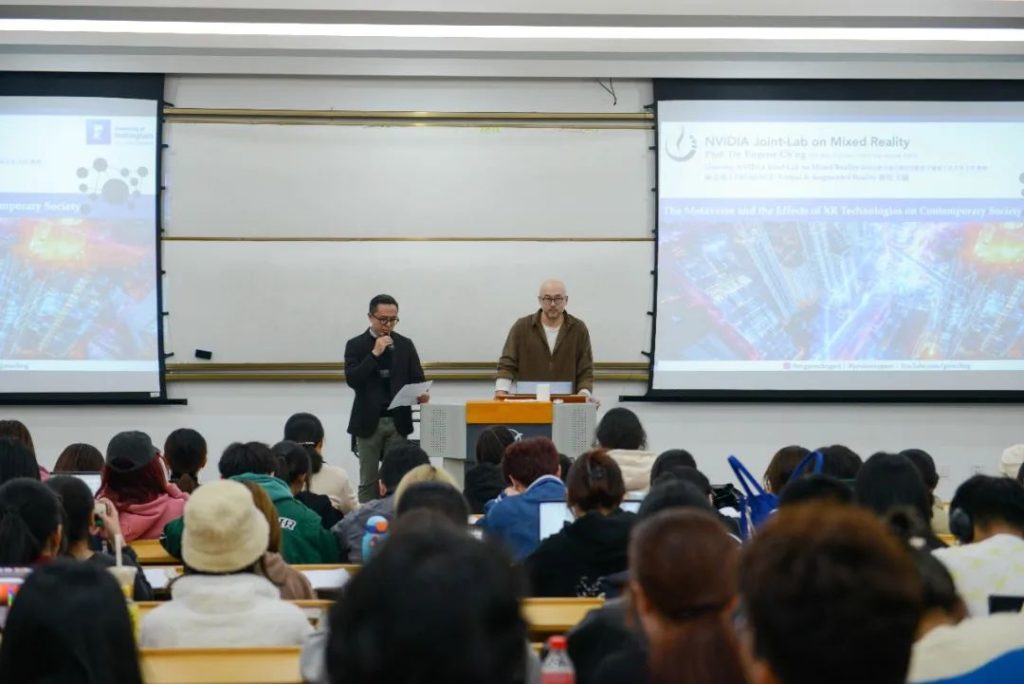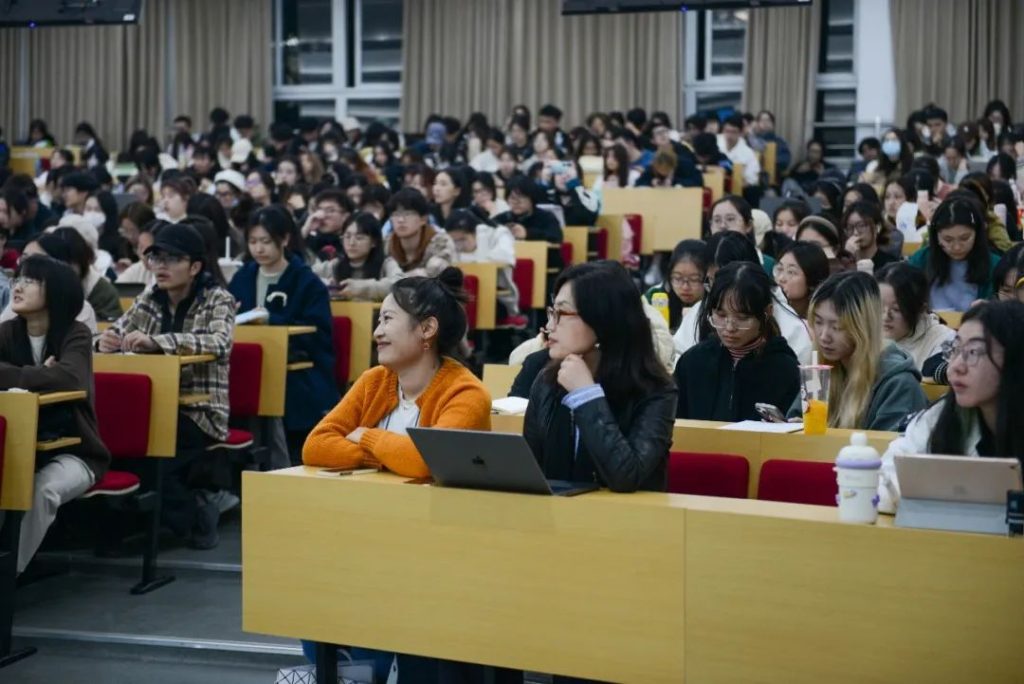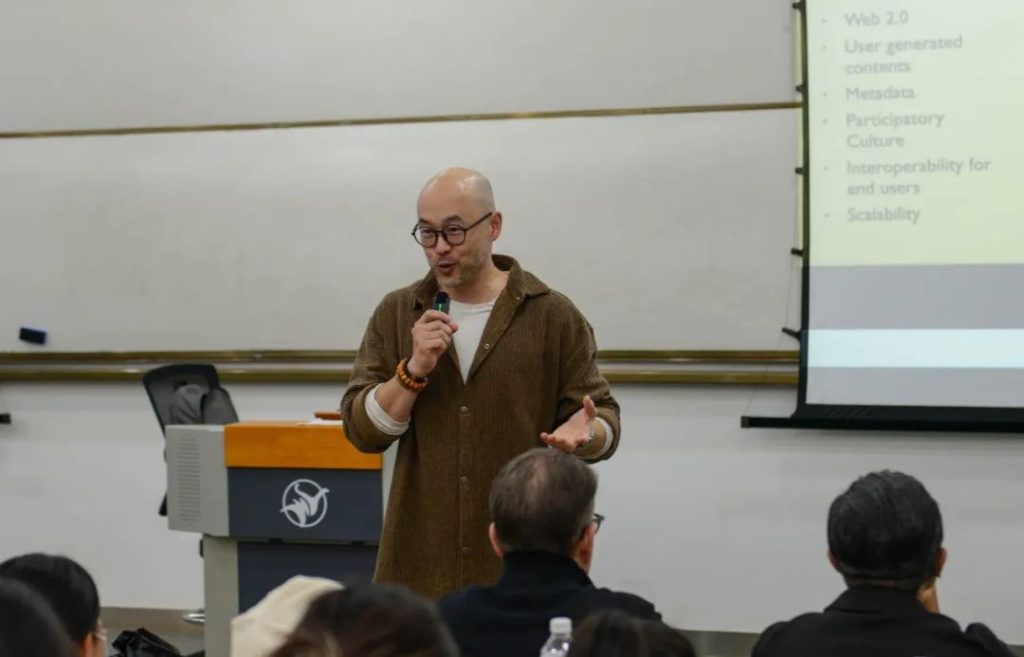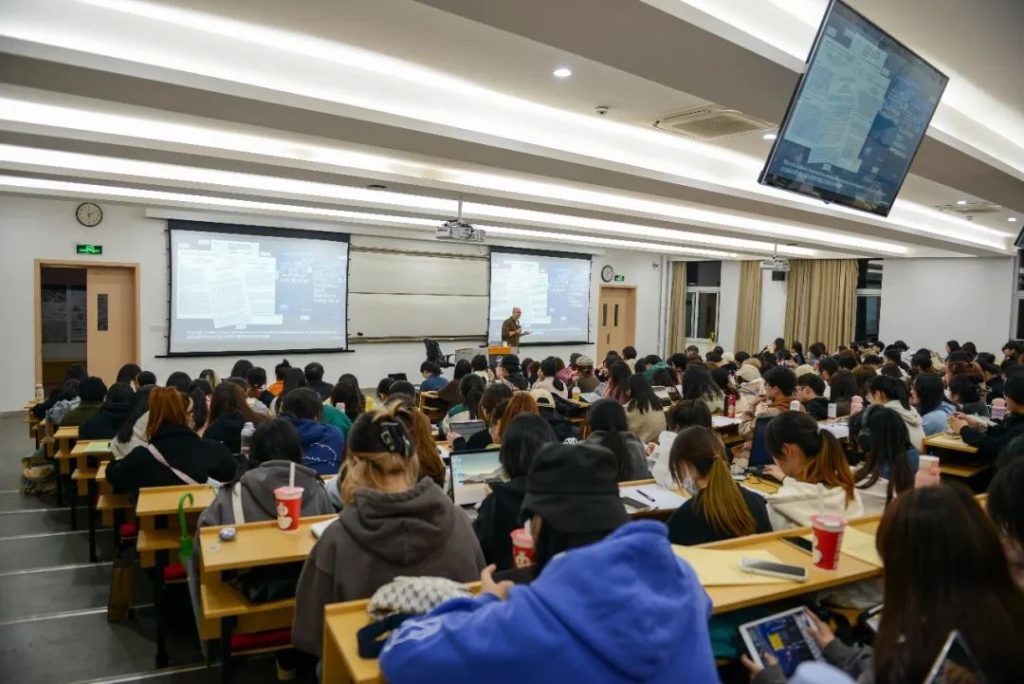
In the history of Virtual Reality (VR) and Augmented Reality (AR) technologies, there has never been a universal theme linking fragmented development to different "universes" that were created for their own purposes. The emergence of the Metaverse, a concept led by large technological investments, is providing a new narrative for virtual space, which has become a universal concept.
Presenter Introduction
Professor Eugene Ch'ng, Professor at the University of Nottingham Ningbo, Director of the NVIDIA Mixed Reality Technology Co-Lab and Editor-in-Chief of the MIT Press journal Presence: Virtual and Augmented Reality, came to the Sino-German School of Design and Communication to talk aboutHow metaverse and mixed reality technologies are impacting contemporary societyThis issue was explained in depth for students, and the lecture was hosted by Dean Yiping Zhang.

Professor Eugene Ch'ng has many years of interdisciplinary work experience. His PhD is from the Department of Electrical, Electronic and Computer Engineering at the University of Birmingham, where he was Director of Innovation at IBM's Centre for Visual and Spatial Technologies and the Centre for Digital Humanities at the University of Birmingham. Professor Chuang has been invited to the Royal Society twice to present research at the Summer Science Fair and was an organizer and speaker at the Royal Society's Theo Murphy Science Conference in 2017. He has also presented digital heritage research at the British Council SPARK Festival in Hong Kong, the British Science Festival, the Orkney International Science Festival, and the Darwin Bicentenary Exhibition. His personal achievements have been featured in many international media, including the National Geographic Channel in the US and Channel 4 in the UK. Professor Chuang has published over 120 papers and has received £3.5 million in research and industry funding. He is the leader and co-investigator of many UK, European and Chinese funded projects on the development of digital technologies for cultural heritage and creative cultural industries.
Lecture Review
Professor Chuang divides the metaverse into four parts -Social Media, Blockchain, Grid 3 and XR Spectrum. He expanded on each of these four concepts for the students, giving them a clearer perception of the metaverse. In the technical framework of Metaverse, mixed reality is as a whole not a standalone technology, a combination of complex human-machine relationships. The metaverse is essentially a capital-driven concept of a digital economy, social media, values, culture and experience of reality beyond interface technology, led by large technology companies with the goal of convergence to profit. The gradual blurring of the virtual-reality border, connectivity and multi-user sociality, empowerment enhancement, and decentralization areFour significant features of the metaverse.

The first version of VR started in 1960, and it has been more than 60 years since then. In today's society, various physical resources are continuously consumed, and the digital domain has become a place for major capital expansion, with media, digital, and virtual space becoming resources that people are competing to capture. Professor Chuang believes that the digital field can generate a lot of profit space. In the two-dimensional media with mainly flat interaction, there are already too many competitors and competing companies, so capital needs to expand to the three-dimensional space to earn more profits.

To gain profits, leading to convince users to enter and use virtual worlds, using Metaverse-related technologies, is an important tool. The current dilemma for major companies is that the acceptance of the technology is still far from expected, and it is difficult to convince users to enter virtual worlds through any kind of device. The metaverse concept is subject to two major challenges: First, we need to answer the question, what exactly does the metaverse offer us that society does not have now? Second, how will the metaverse and its features add value beyond the many applications used for work, communication and leisure?
Nevertheless, metaverse and mixed reality technologies have begun toInfluencing every aspect of society in a subtle way. For example, VR technology is now being used for large-scale marine and terrestrial remote sensing, paleoenvironmental climate change, and virtual environmental reconstruction of paleolandscapes. Destroyed human landscapes can be recreated through computer modeling and simulation. Although many people are not aware of it, we are often already wandering in the mixed reality provided by the Metaverse.

Professor Chuang divides reality intoObjective reality, subjective reality, virtual reality and hyperrealityFour kinds. "When I'm out and about, I like to make small talk with people. Once I asked the waiters at a restaurant what they do after a busy day at work, and they said they would brush up on their jitterbug. We spend two or three hours in the virtual world after working in reality, and that has been a huge change."

The society of the 21st century is a digital society, and the most important thing for the future development of the metaverse is not the hardware, but the value that users can get from it.
During the Q&A session of the lecture, students from the Sino-German College of Advertising 2+2 asked Prof. Zhuang questions about the model of brand communication in the metaverse. Dean Yiping Zhang and Prof. Stefan Waller, International Academic Director of the College, discussed in more depth with Prof. Zhuang about the hardware and software bottlenecks encountered in the development of the metaverse, digital identity, user experience and interaction methods in the metaverse.
The advancement of technology has brought endless thoughts and explorations for human beings. There is still much to explore and study about metaverse and mixed reality technology. Let's plunge in together and actively participate in this important change for humanity.
END

